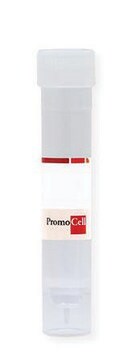C1016
Calcium chloride
anhydrous, granular, ≤7.0 mm, ≥93.0%
Sign Into View Organizational & Contract Pricing
All Photos(4)
About This Item
Linear Formula:
CaCl2
CAS Number:
Molecular Weight:
110.98
EC Number:
MDL number:
UNSPSC Code:
12352300
PubChem Substance ID:
NACRES:
NA.55
grade:
anhydrous
form:
granular
Recommended Products
grade
anhydrous
vapor pressure
0.01 mmHg ( 20 °C)
Assay
≥93.0%
form
granular
particle size
≤7.0 mm
mp
772 °C (lit.)
storage temp.
room temp
SMILES string
[Cl-].[Cl-].[Ca++]
InChI
1S/Ca.2ClH/h;2*1H/q+2;;/p-2
InChI key
UXVMQQNJUSDDNG-UHFFFAOYSA-L
Looking for similar products? Visit Product Comparison Guide
Related Categories
Application
Calcium chloride was used during the isolation of total β-glucan from hydrolyzed barley powders. It was also used as a cross-linker during the preparation of Aloe vera pectin gels.
It may be used in the following processes:
It may be used in the following processes:
- Modification of natural zeolite to increase its ability of fluoride removal.
- Synthesis of calcium sulfate whiskers utilized in making polymer reinforcing composite materials.
- Synthesis of calcium chloride-anodized aluminum composites, a solid sorbent.
- As an extractant in the soil analysis process.
- As a catalyst in the synthesis of aldols by reacting dimethylsilyl (DMS) enolates with aldehydes.
Caution
may contain powder and some dark grey granules
Signal Word
Warning
Hazard Statements
Precautionary Statements
Hazard Classifications
Eye Irrit. 2
Storage Class Code
13 - Non Combustible Solids
WGK
WGK 1
Flash Point(F)
Not applicable
Flash Point(C)
Not applicable
Choose from one of the most recent versions:
Already Own This Product?
Find documentation for the products that you have recently purchased in the Document Library.
Customers Also Viewed
Hao Li et al.
Nano letters, 19(8), 5194-5204 (2019-07-02)
A globally imminent shortage of freshwater has been demanding viable strategies for improving desalination efficiencies with the adoption of cost- and energy-efficient membrane materials. The recently explored 2D transition metal dichalcogenides (2D TMDs) of near atomic thickness have been envisioned
Stephanie M Dillon et al.
Bio-protocol, 10(2), e3486-e3486 (2020-01-20)
Gut CD4 T cells are major targets of HIV-1 and are massively depleted early during infection. To better understand the mechanisms governing HIV-1-mediated CD4 T cell death, we developed the physiologically-relevant Lamina Propria Aggregate Culture (LPAC) model. The LPAC model
Ángel Serrano-Aroca et al.
PloS one, 12(9), e0185235-e0185235 (2017-09-22)
Micrometer length tubes of graphene oxide (GO) with irregular form were synthesised following facile and green metal complexation reactions. These materials were obtained by crosslinking of GO with calcium, zinc or strontium chlorides at three different temperatures (24, 34 and
Federico Lopez-Hernandez et al.
The Plant cell, 32(10), 3346-3369 (2020-08-10)
Arabinogalactan proteins (AGPs) are a family of plant extracellular proteoglycans involved in many physiological events. AGPs are often anchored to the extracellular side of the plasma membrane and are highly glycosylated with arabinogalactan (AG) polysaccharides, but the molecular function of
Sang Hoon Lee et al.
Preventive nutrition and food science, 20(2), 110-118 (2015-07-16)
This study was performed to investigate changes in the content and purity, as well as physical characteristics of β-glucan extracted from acid hydrolyzed whole grain barleys. Waxy and non-waxy barleys (Hordeum vulgare) were hydrolyzed with different concentrations of HCl (0.1~0.5
Our team of scientists has experience in all areas of research including Life Science, Material Science, Chemical Synthesis, Chromatography, Analytical and many others.
Contact Technical Service






